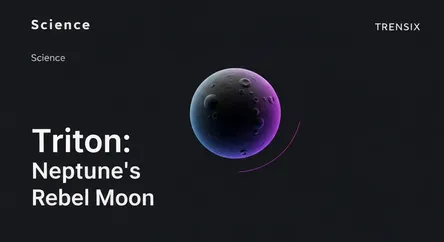Science
Triton: Neptune's Rebel Moon

Discover Triton, Neptune's largest moon. Explore its retrograde orbit, icy volcanoes, and mysterious origins from the outer solar system.
What is it?
Triton is the largest of Neptune's moons and one of the most unusual objects in our solar system. It is unique among large moons because it has a retrograde orbit, meaning it circles Neptune in the opposite direction of the planet's rotation. This suggests Triton is a captured object from the Kuiper Belt. It's also one of the coldest known worlds, with a surface of frozen nitrogen and water ice reaching temperatures of -235°C (-391°F). Most remarkably, its surface is geologically active, featuring cryovolcanoes (ice volcanoes) that erupt plumes of nitrogen gas and dust into its thin atmosphere.
Why is it trending?
Interest in Triton remains high due to its dynamic and mysterious nature. Data from the Voyager 2 flyby in 1989 is still being studied, and there is strong advocacy for a return mission, such as the proposed NASA Trident concept. Scientists are fascinated by its active geology and the strong possibility of a subsurface liquid ocean beneath its icy crust. This potential ocean, coupled with internal heat, makes Triton a prime candidate in the search for habitable environments and extraterrestrial life in the outer solar system.
How does it affect people?
Studying Triton provides invaluable insights into the formation of our solar system and the dynamics of planetary capture. It serves as a natural laboratory for understanding icy worlds, which are common throughout the universe. The quest to explore Triton drives technological innovation, pushing us to develop new spacecraft and instruments capable of surviving extreme cold and operating autonomously at vast distances. Ultimately, understanding worlds like Triton helps answer fundamental questions about the potential for life beyond Earth and humanity's place in the cosmos.